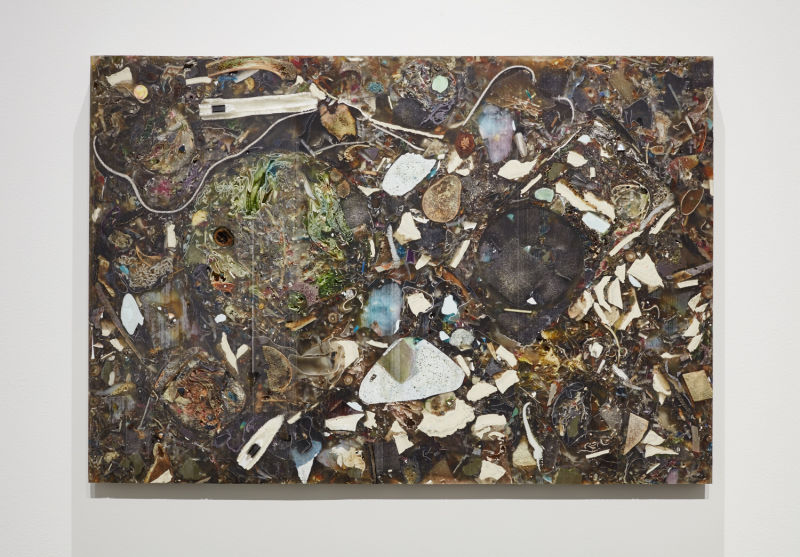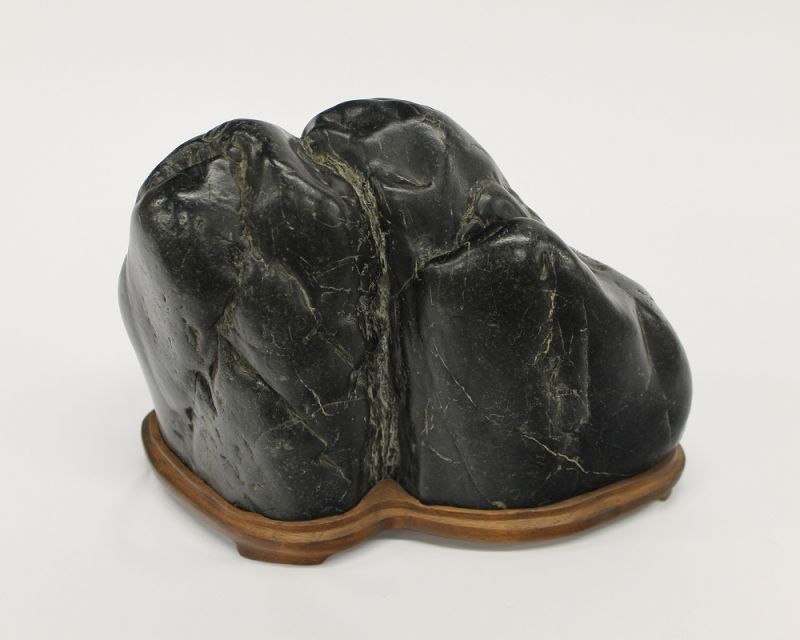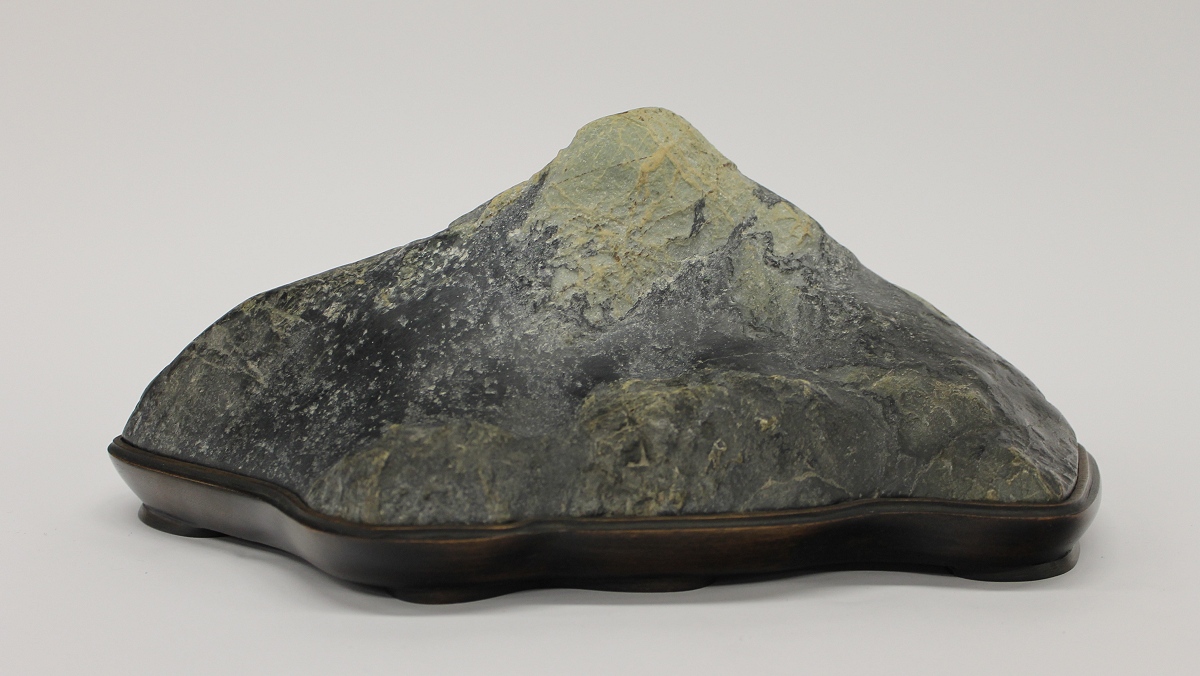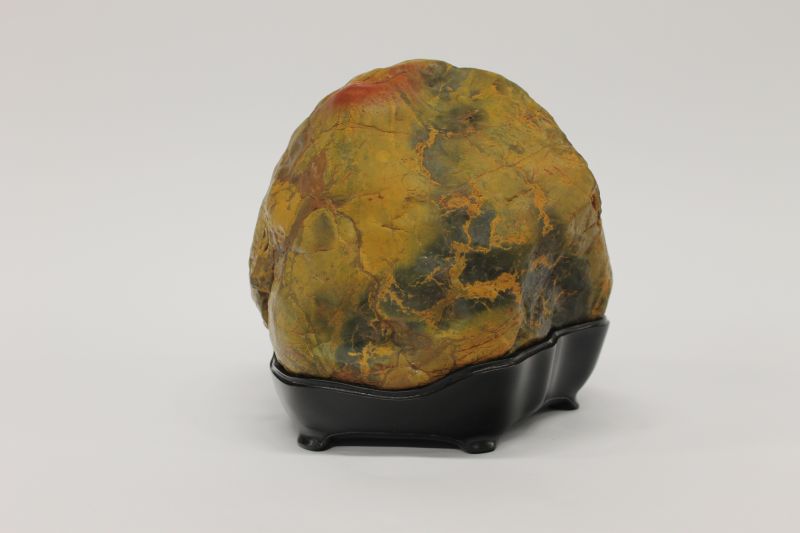The Oakland Museum of California’s current mash-up exhibit called “Unearthed: Found + Made” explores the art inherent in geology — or is it the other way around? Together in one room, artificial rocks made by a cutting-edge artist hang out with naturally sculpted stones that were selected following the principles of an ancient traditional art form.
The traditional art, based on natural rocks, is called suiseki. It’s a practice akin to bonsai, imported from Japan. Where the bonsai artist cultivates miniaturized trees, the practitioner of suiseki (“water stone” in Japanese) selects naturally shaped stones that suggest a landscape. The effect in the viewer is a sublime sense of the large and universal embodied in the small and individual.
Paired with these natural stones are works by Jedediah Caesar. Caesar creates art from found objects that he immerses in resin and then uses as the raw material for sculptures, wall hangings and other forms. Cut in slices and hung on the gallery wall, this composite material resembles the polished stone of a futuristic building. It’s beautiful in a Mad Max way, as if someone who only read about rocks decided to make some.

Suiseki dates back more than 1,000 years in Japan and less than a century in California, but our state has recently become a hotbed of activity. “Unearthed,” running through April 24, is the museum’s first show of this material, contributed by members of the California Suiseki Society and San Francisco Suiseki Kai.
Like people, stones acquire character from experience. This geological analogy with living things is part of what makes suiseki tantalizing. Practicing suiseki is not so much creation as it is curation or recognition, as if one were to collect the figures we see in clouds. Nature is the sculptor and the stones are portraits — but we decide what they’re portraits of.


